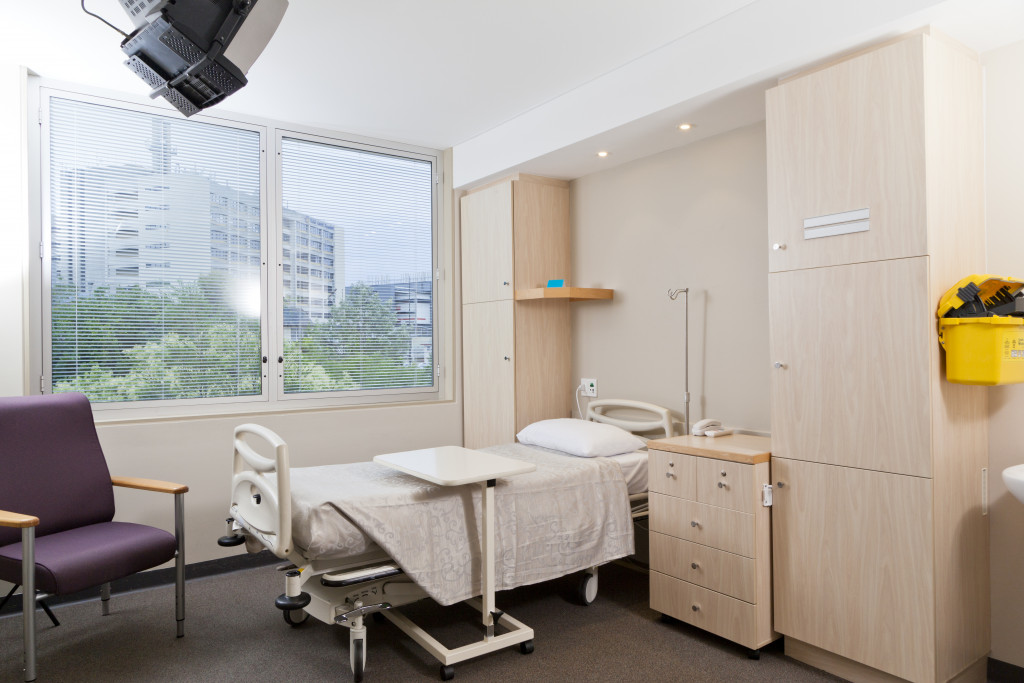Most people get anxious when they step inside hospitals and other healthcare facilities. After all, medical settings are often associated with unpleasant experiences, such as injury, disease or death. That said, healthcare buildings must be designed with maximum comfort, safety, and hygiene in mind.
When it comes to building or renovating healthcare facilities, architects and healthcare providers must factor in these elements:
Bright and inviting entrances
Designing accessible front entrances is the first step to making patients and visitors feel comfortable. Create a main point of entry and ensure the reception desk is visible the minute they enter the building. Having a friendly face to greet them is reassuring.
Add multiple check-in options for patients suffering from social anxiety. Multiple staffed reception desks and self check-in kiosks will give patients more choices and prevent long queues.
Well-lit entrances give a feeling of warmth and friendliness. Allow natural light to enter by installing skylights, floor-to-ceiling windows, and large glass doors.
Consider an open-plan design for the lobby. An open space will make hospital feels less cramped and confining. That said, minimize clutter and ensure all unused equipment are placed in their proper storage areas. More space and less clutter will put patients and visitors at ease.
It’s no secret that art can really transform a room. In hospitals, putting up artworks can make entryways and lobbies look less drab and sterile. But looking at art can also alleviate symptoms of anxiety and depression. You can also add some greenery and soothing background music for a more relaxed atmosphere.
Disease-resistant walls
Hospitals are breeding grounds for disease and bacteria. Investing in airtight and watertight hospital wall coverings is essential for infection control. Choose smooth and non-porous wall-cladding solutions designed to reduce bacterial growth or pest infestation behind the panels. Linings should be able to withstand regular cleaning using industrial cleaners and disinfectants.
Impeccable flooring
The first physical contact a person will have with your space is the flooring. It serves as the foundation of your design and can impact the facility’s overall look.
Avoid drab and washed out colored floors. Consider using carpets for a cozier feel, although they can be trickier to clean. You can limit their use in entryways and other high-traffic areas. Use wooden floors for an elegant touch. They can also be glossed over which makes them bleachable and more hygienic.
Passive daylighting solutions

As mentioned earlier, natural light makes spaces look more open and inviting. But exposure to natural light offers several health benefits for patients, too. It allows skin to absorb vitamin D, an essential nutrient for preventing bone loss. It also lowers the risk of weight gain, heart disease, and various cancers.
Using artificial light as your main light source is not only costly, but also unhealthy. It could increase the risk of migraines, fatigue, and eye strain not just for your patients, but also for your staff.
Aside from daylight-facing windows, use exterior shades on the outside of the building envelope to block light from entering the building during the hottest hours of the day. Exterior shades can either be fixed or motorized and can be made of concrete, metal, wood, and fabric. They also lower heat gain and harsh glare during peak hours.
Reposition desks and work pods so everyone has access to natural light. Same with shelves, cabinets, and other large objects that block your access to external light sources.
Comfortable interior features are crucial to hospital design. They put visitors at ease and leave a profound effect on the patient’s well-being. Hospitals must leverage interior design to generate better health outcomes and improve overall patient experience.







